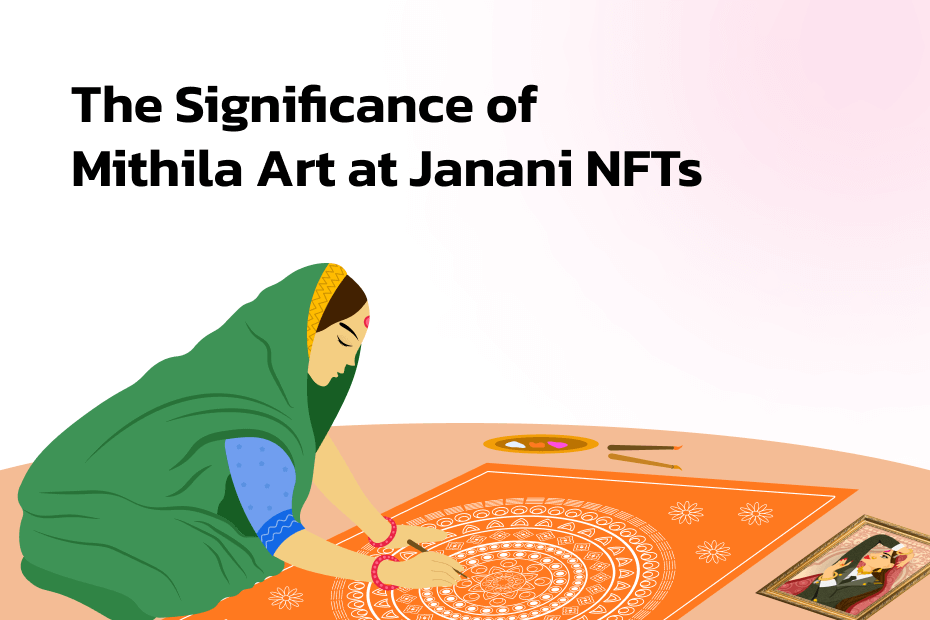DISCLAIMER : Janani is an NFT collection that takes inspiration from traditional art forms such as Mithila art.
It is essential to note that Janani is not a representation of Mithila art, but instead, it is a digital collection that amalgamates the style with modern influences to create a unique manifestation of it.
Mithila art has a rich history and is known for empowering women by providing them with a creative outlet to express themselves and their stories. It aligns to the mission and vision of Janani which aims to celebrate art, inclusivity, representation, and equal opportunities for all.
THE LEGEND SURROUNDING MITHILA ART:
Mithila art, also known as Madhubani paintings, has a rich history and legend surrounding its origin. The art form dates back to the 7th century AD and is said to have begun with King Janak ( A legendary figure in Hindu mythology and the ruler of Mithila, an ancient kingdom located in present-day Nepal and India) ordering his subjects to paint walls of homes to welcome Lord Ram when he came to ask for his daughter Sita’s hand in marriage. This unique art form then became popular at weddings, festivals, and feasts in the Maithili-speaking territory of Mid-west Nepal and some places in Bihar, India.
THE ART AND HOW IT HAS INSPIRED THE JANANI COLLECTION:
Traditionally, the art form was passed on from generation to generation of women in the region. The painting was done with twigs, fingers, natural dyes and pigments. Most of the traditional art depicted natural objects like sun, moon and nature, deities from mythological epics, royal courts and weddings.
While this centuries-old art form may not be as widely practiced as it was in the past, it is revered worldwide by admirers of unique folk art. It continues to provide women with an avenue to hone their skills and achieve financial independence, recognition, and respect within the mithila region and beyond.
Beyond its aesthetic value, Mithila art has provided women with a creative outlet to tell the stories of their lives, making it more than just a way to beautify homes as women would take to the canvas to paint the life they wished to live.
As it continues to evolve, it remains an important cultural symbol and source of empowerment for women.
Suggested Reading: The Making of Janani NFTs
THEMES
Mithila art is a kind of traditional painting that reflects the natural environment including animals, people, lifestyle, tradition, and culture of the local people. It is also a pattern of men being the primary subjects of depiction in the paintings and their association with nature. Some include scenes of religious legends and deities from ancient tales. Natural objects like the Sun, the Moon, the Tulsi plant are also widely painted, as they hold much religious and cultural significance in Hinduism. Some also feature scenes from social events like weddings, in the royal and local senses.
What makes Mithila art so special and beautiful is that there is no space left in the canvas of choice. The gaps are all filled by paintings of flowers, animals, birds, and even geometric designs of a variety of colors. The paintings are all narrations of mythological and religious events done with fingers, twigs, brushes, nib pens, and even matchsticks. The colours are of natural origin and customized using dyes from plants and mud.
Some widely painted images of deities include Vishnu, Ganesh, Radha, Krishna, and of course Sita, and Ram. Particular occasions like birth or marriage, and festivals such as Holi, Surya Sashti, Kali Puja, Upanayana, Durga Puja are depicted too. There were different varieties of Mithila paintings done on walls coated with mud and cow dung. It bore precision and skills to bring forth the symbolic representation of the subject depicted. This credits to its uniqueness.
